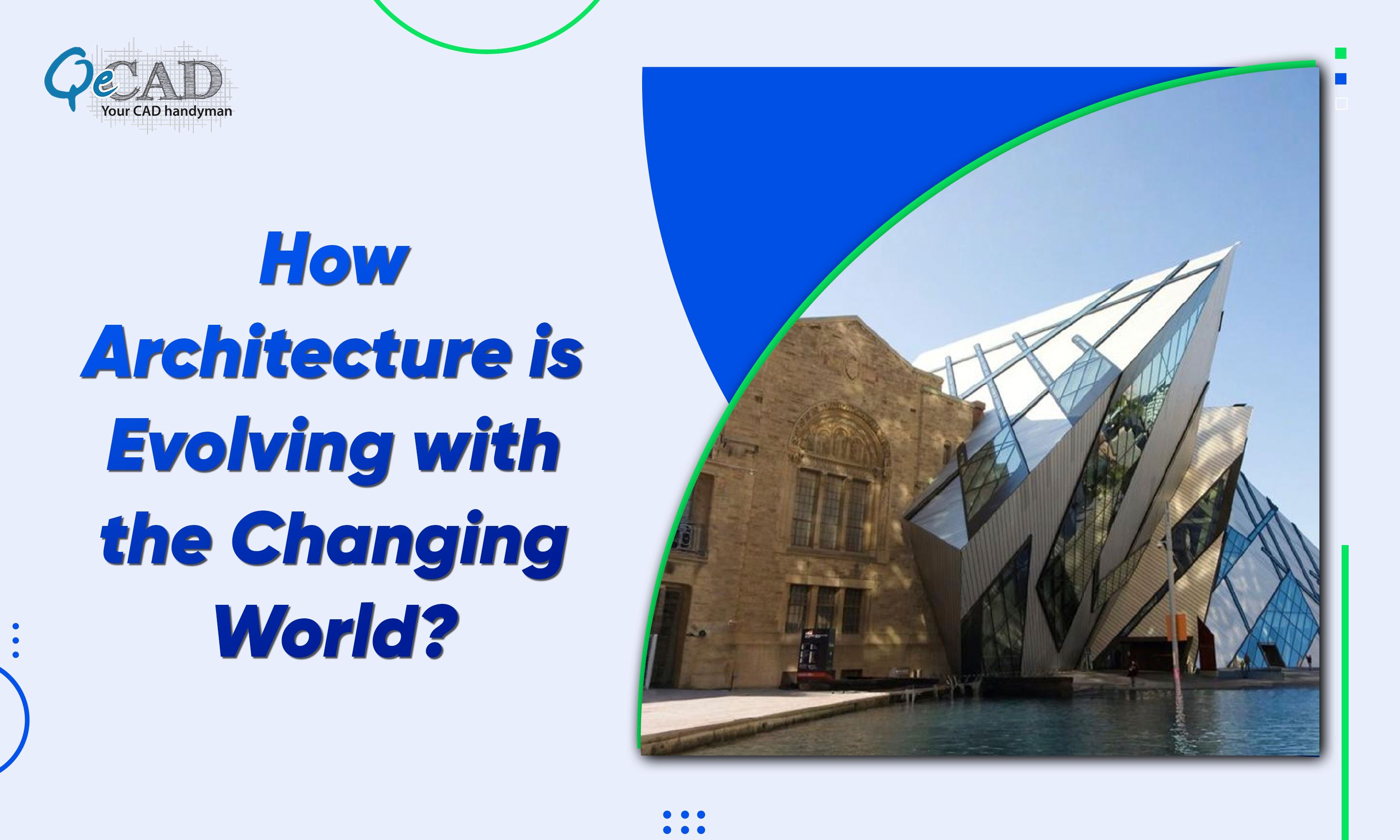
As we navigate through an era marked by the rapid urbanization, climatic change along with the technological transformation, the role of the architecture has evolved quite far beyond creating the aesthetically pleasing structures. Today’s architects are designing for the resilience, sustainability, inclusivity and the digital integration thus reshaping the world to meet the complex global challenges.
The Traditional Foundation of Architecture
Historically, architecture focused more on the form and function balancing the beauty, utility and also the safety. While these principles still apply, today’s-built environments must also respond to the deeper societal, environmental and technological shifts. Architecture is no longer just about constructing the buildings; it’s about designing the solutions that shapes how people live, connect as well as thrive.
The Shift Toward Sustainability and Resilience
One of the most pressing changes influencing the architecture is the global climate crisis. The architects are now at the forefront of designing the net-zero buildings, implementing the passive design strategies using the sustainable materials and also integrating the renewable energy systems. The emergence of green building certifications such as LEED and BREEAM has reinforced the architect’s responsibility in lowering the carbon footprints as well as promoting the environmental stewardship.
Additionally, the resilient design is gaining the momentum. Whether dealing with the floods, wildfires or even the urban heat islands, the architects must anticipate and adapt to the natural disasters thus ensuring that the structures can withstand and recover from the environmental stressors.
Digital Innovation is Reshaping the Design Process
Technological advancement is another key driver of the architecture’s expanding role. Tools like BIM, parametric design, AI-driven planning and digital twins are revolutionizing how the architects conceptualize, simulate and even execute the designs. These technologies enhances the collaboration, reduces the errors and also enable the data-informed decision-making across the building’s lifecycle.
Additionally, the growing demand for the Architectural Modeling Services allows the firms to provide detailed and immersive digital representations of the design concepts improving the communication between the stakeholders and clients.
Furthermore, the use of Augmented Reality (AR) and Virtual Reality (VR) in architecture is bridging the gap between the vision and experience allowing the stakeholders to virtually explore the projects before they are built thus reshaping the client engagement as well as the design accuracy.
Preserving Heritage While Crafting the Future of Architecture
As the architecture progresses into the future, it also holds a deep responsibility to honor the past. Preserving the heritage buildings and integrating the cultural context into the modern designs is becoming a vital part of the contemporary architecture. Whether through adaptive reuse, conservation techniques or even the contextual design, many architects are finding the ways to blend the old with the new.
This duality ensures that the cities retain their identity and collective memory while embracing the innovation. In places like Europe, India and the Middle East, modern infrastructure is increasingly being built around or within the historic frameworks—demonstrating that progress and preservation that can coexist meaningfully.
Social Equity and Inclusive Design
Architecture is increasingly recognized as a medium for social transformation. Inclusive design principles are being embedded to accommodate the diverse needs whether for the elderly, people with disabilities or the underrepresented communities. The architects are rethinking the public spaces, affordable housing as well as the urban infrastructure to ensure the equity, accessibility and community’s well-being.
In cities worldwide, the emphasis on the human-centered design is growing—prioritizing the livability, walkability and the mental well-being in both urban as well as the rural contexts. The pandemic underscored this shift, as people demanded more adaptable, open and health-focused environments.
Globalization and Cross-Disciplinary Collaboration
Today’s architectural practice transcends borders. With remote collaboration, firms are engaging in the international projects that blends the cultural influences, regulations and even the regional climates. Architecture is becoming more interdisciplinary, overlapping with the fields such as town/urban planning, engineering, environmental science and data analytics.
As projects become more complex, the value of precise Architectural Drafting Services becomes evident helping to ensure the accurate documentation, smoother workflows and also the regulatory compliance across the geographies.
This integration is essential in developing the smart cities, optimizing infrastructure and managing the rapid urban expansion. Many architects are working closely with the policymakers, technologists and environmentalists to co-create the cities that are future-ready.
The Road Ahead: What Architecture Must Embrace
To stay relevant and impactful, the architecture must:
- Champion sustainability as a design imperative, not an afterthought.
- Leverage technology to amp up the precision, transparency and the creativity.
- Promote social responsibility through inclusive, affordable and participatory design.
- Balance innovation with the conservation, protecting the cultural identity through the heritage-sensitive architecture.
- Foster continuous learning, adapting to the emerging trends in the climatic science, material innovation and also the digital ecosystems.
Conclusion
In a world of accelerating the change, architecture has transformed into a dynamic force that not only reflects the times but actively shapes them too. As architects designs the skylines of tomorrow, they are called to be the innovators, problem-solvers and also the visionaries balancing the art and science to create the spaces that are sustainable, inclusive and future-ready.
Designing the future isn’t just about building for today, it is more about reimagining how we live, work and connect in a world that’s constantly evolving while also staying rooted in the rich tapestry of our past.
